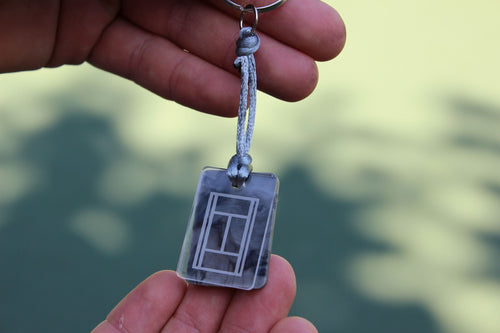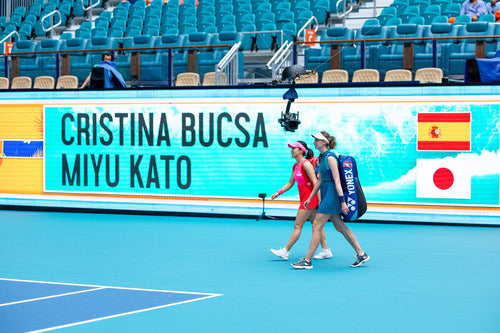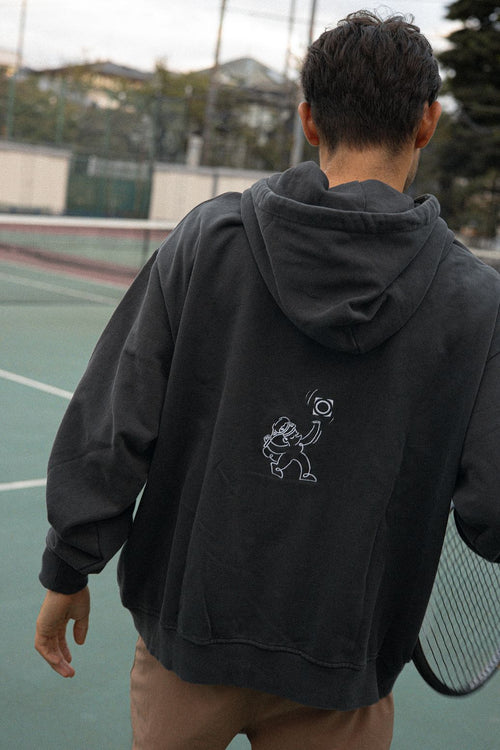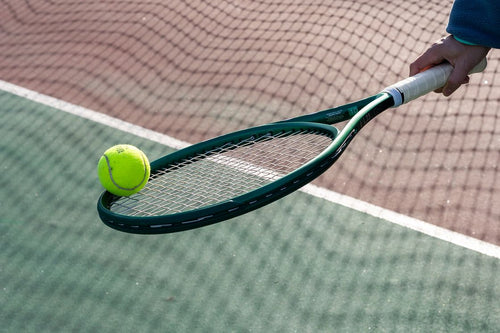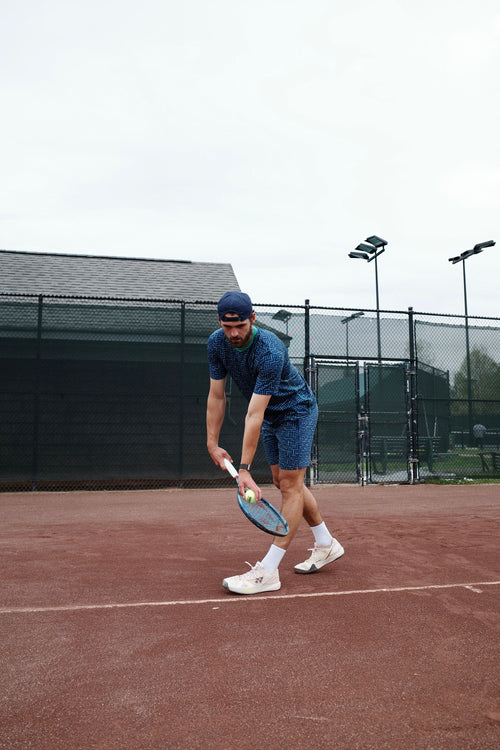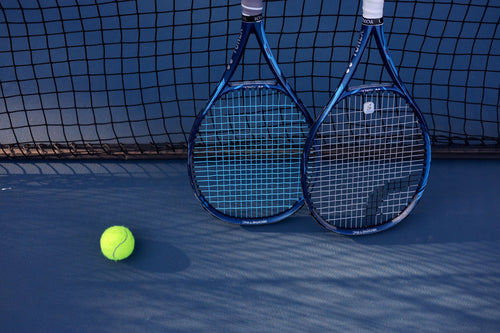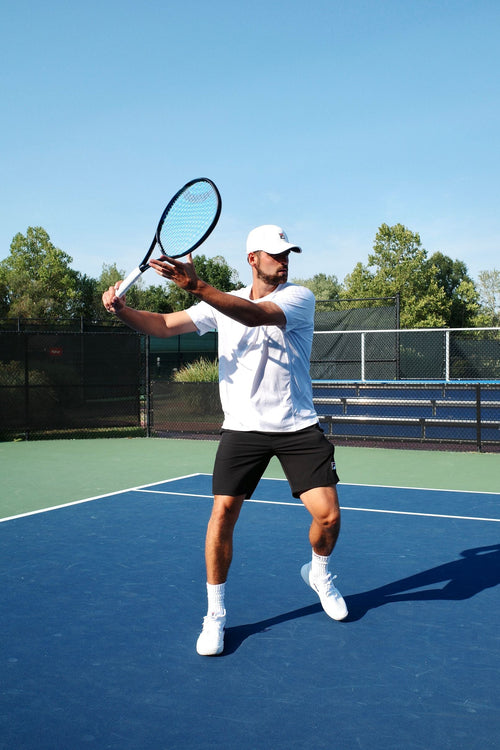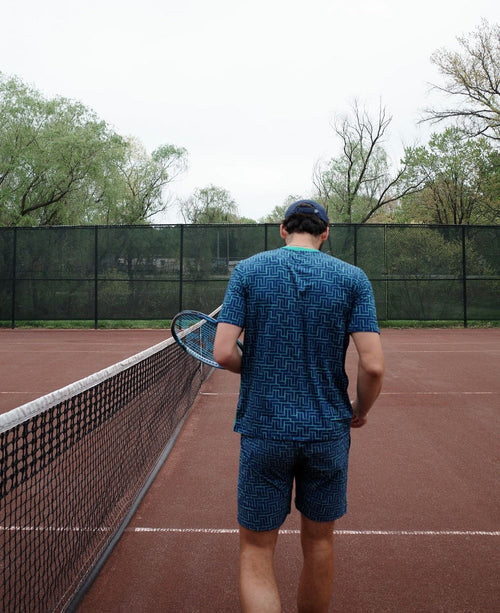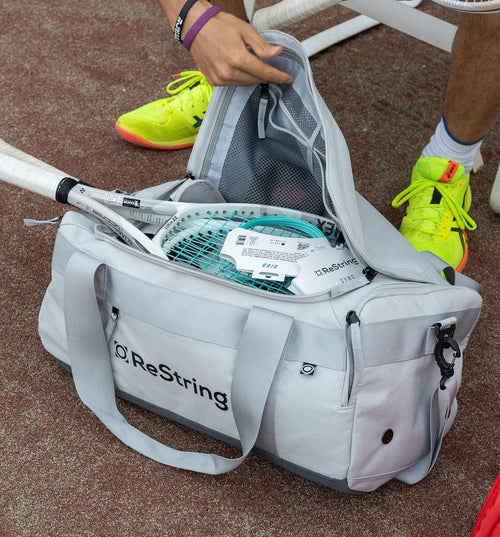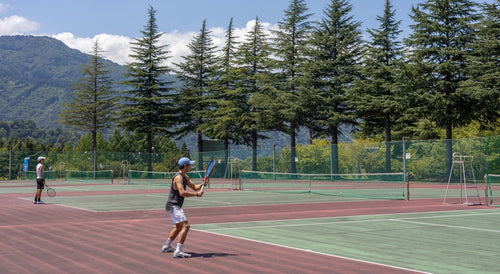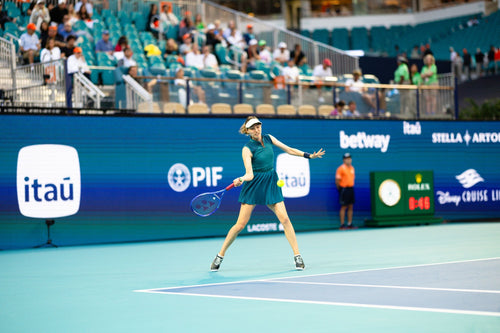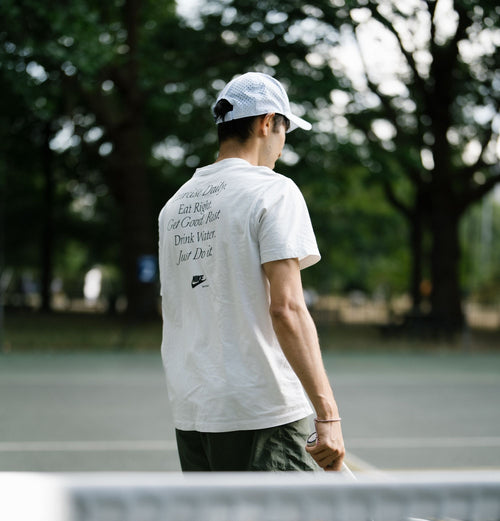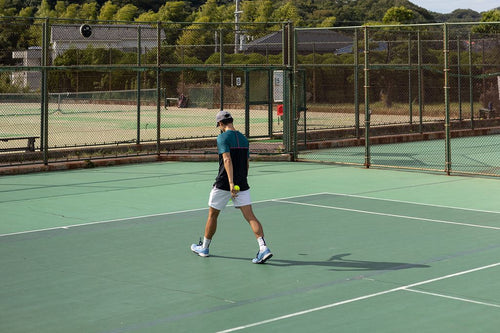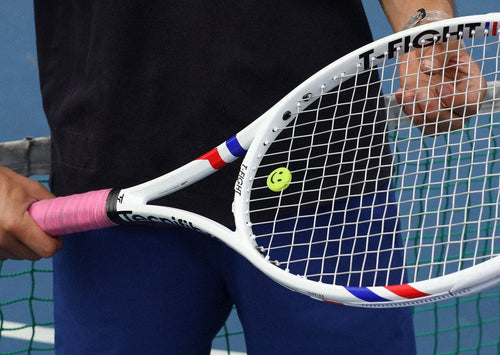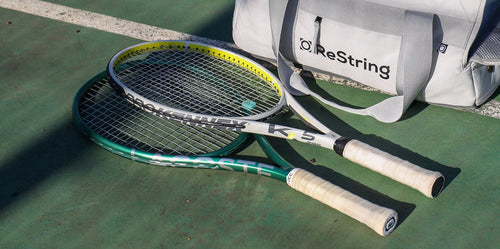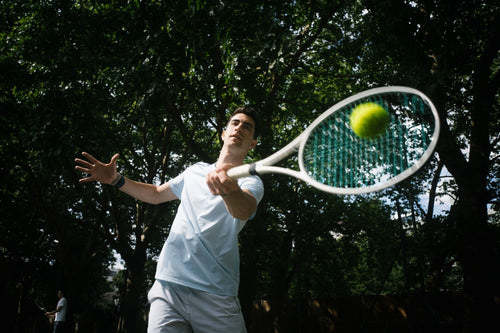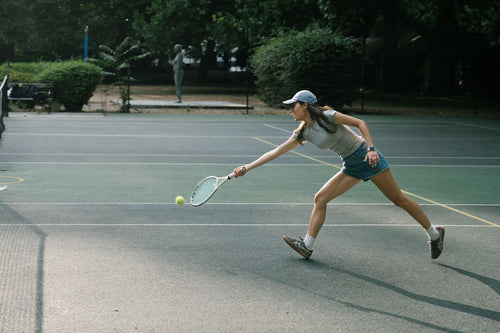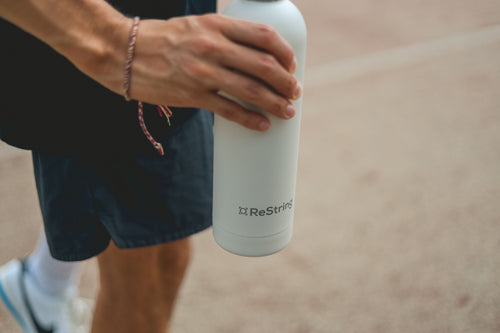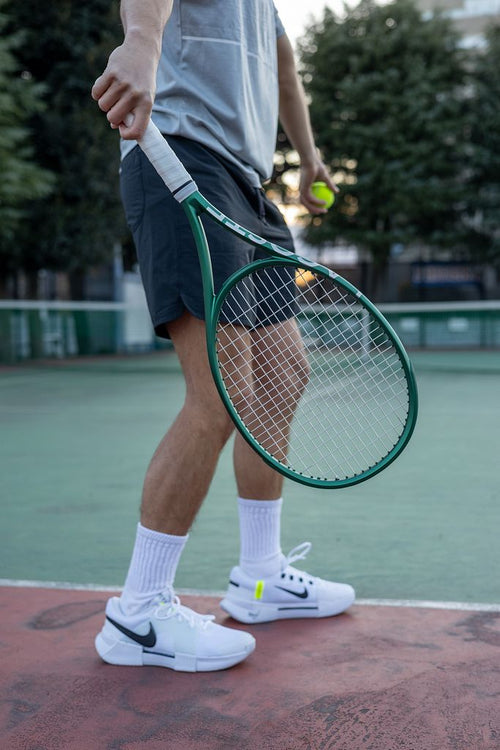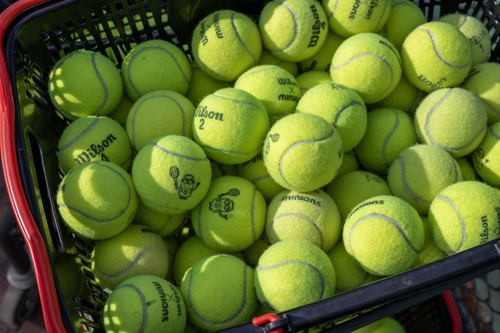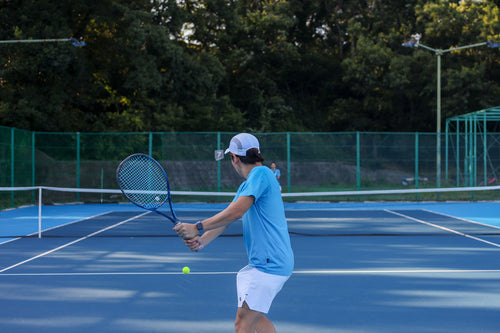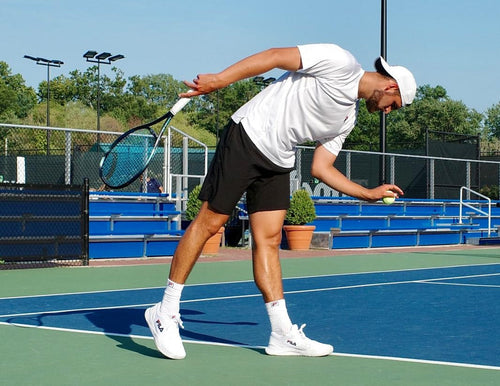How to Match Your Tennis Strings to Court Surface
Juan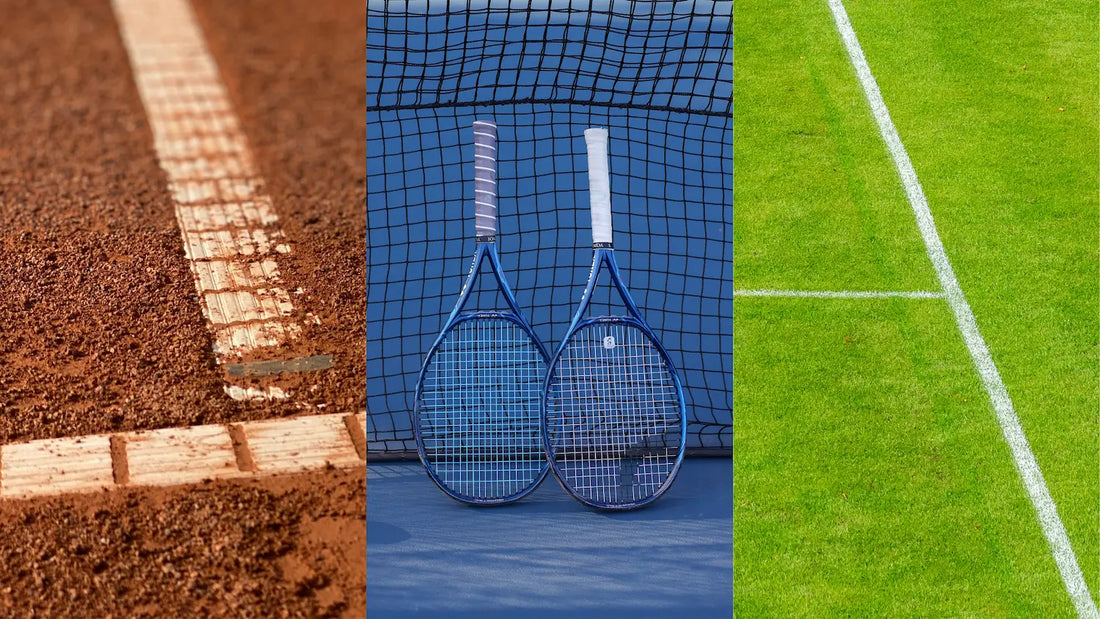
Did you know that a tennis ball bounces nearly 50% higher on clay than it does on grass?
This dramatic difference in ball behavior means that the string setup that helps you dominate on clay courts might actually hold you back on grass or hard courts.
Understanding how to match your strings to your playing surface isn't just for the pros. It's a game-changer for players at every level.
This article gives you food for thought on how to optimize your string setup for any court surface you encounter.
There are 3 Court Surfaces
Tennis is played on three main surfaces: hard courts, clay courts, and grass courts.
Each surface affects how the ball moves and bounces, which means your string setup can make a real difference in your performance. While you don't need to change strings every time you play on a different surface, it's worth considering how well your strings suit the surface where you spend most of your time playing.
Since every player's game is unique, there's no one-size-fits-all solution for string selection. Instead, use this guide as a starting point to find what works best for your playing style.
Now, let's look at how different strings can complement your game across hard courts, clay, and grass.
Hard Courts: The Most Common Surface
Hard courts dominate tennis, hosting 55% of ATP tour matches including two Grand Slams: the US Open and Australian Open. These courts come in two varieties - indoor and outdoor - each demanding different string considerations.
Indoor Hard Courts
Indoor hard courts produce medium-paced bounces with minimal air resistance, leading to shorter rallies. The controlled environment favors aggressive players who can generate their own pace, particularly those with powerful serves and groundstrokes.
Outdoor Hard Courts
Outdoor courts play differently due to environmental factors. Air resistance moderates the ball speed, creating more balanced rallies that suit all-around players. The playing conditions can vary significantly with weather changes.
String Setup Ideas for Hard Courts
A versatile string setup works best for both indoor and outdoor hard courts. Perhaps try a Zero x Sync hybrid combination that offers balanced performance, adapting to the medium-paced nature of hard courts while providing enough control and spin potential for various playing styles.
Clay Courts: The Spin-Friendly Surface
Clay courts represent the ultimate test of patience and spin, with the French Open standing as the premier clay court Grand Slam. The unique surface characteristics create a distinctly different game from hard courts.
How Does Clay Affect The Play
Clay produces high bounces and slower ball speeds, significantly extending rally lengths. The gritty surface grabs the ball, giving it more time to interact with your strings and amplifying spin effects.
What Style of Play Suits Clay
The slower pace of play benefits baseline players who can construct points methodically. On clay, the surface naturally dampens pace on shots, so physical endurance and tactical shot placement often prove more valuable than raw power.
String Setup Ideas For Clay
Your playing style should guide your string choice on clay. However, if you want to maximize spin and take advantage of the high bounce, a full bed of Zero will enhance your topspin potential. For players who prefer to construct points with precise placement, Sync offers superior control and feel for tactical shot-making.
Grass Courts: The Speed Surface
Grass courts create the fastest tennis environment of all surfaces, with Wimbledon being the most famous. The natural surface brings a unique set of challenges and opportunities for players.
How Does Grass Affect The Play
The low, skidding bounces on grass make for quick points and aggressive play. Balls stay low and travel faster through the court, giving players less time to react and set up their shots.
What Style of Play Suits Grass
Grass courts traditionally favor serve-and-volley players because of the speed and low bounce. The surface rewards quick reflexes and decisive net approaches, though modern baseline players have also adapted their games successfully to grass.
String Setup Ideas For Grass
Once again, craft your string setup to suit your game. However, a full bed of Sync will help manage the faster pace of grass court tennis. The string's control-oriented properties give you more command over your shots, particularly important when dealing with quick, low bounces. The enhanced feel also benefits the touch shots and volleys that often decide grass court points.
FAQs
How does weather affect my strings?
Heat makes strings more elastic and causes faster tension loss, while cold weather makes them stiffer and less responsive. For a detailed explanation on this and how you can protect against these changes, read our guide on How Temperature Affects Your Tennis Strings.
Should I string at different tensions on different courts?
Each surface benefits from slight tension adjustments. Use your standard tension for outdoor hard courts, and consider going 1-2 pounds lower for indoor hard courts. On clay, string slightly lower for extra power and spin, while grass courts often work better with slightly higher tension for added control.
Conclusion
Each tennis court surface creates its own unique playing environment. Hard courts offer a balanced, medium-paced game, clay rewards patient point construction and spin, while grass produces fast-paced, low-bouncing tennis.
Your personal playing style should always guide your string choice. However, understanding how different strings complement each surface can help you make informed decisions, especially if you primarily play on one type of court.
ReString offers the perfect string to level up your game, whether you're looking to boost your spin on clay with Zero, enhance your control on grass with Sync, or get all-round performance with a Zero x Sync setup on hard.

